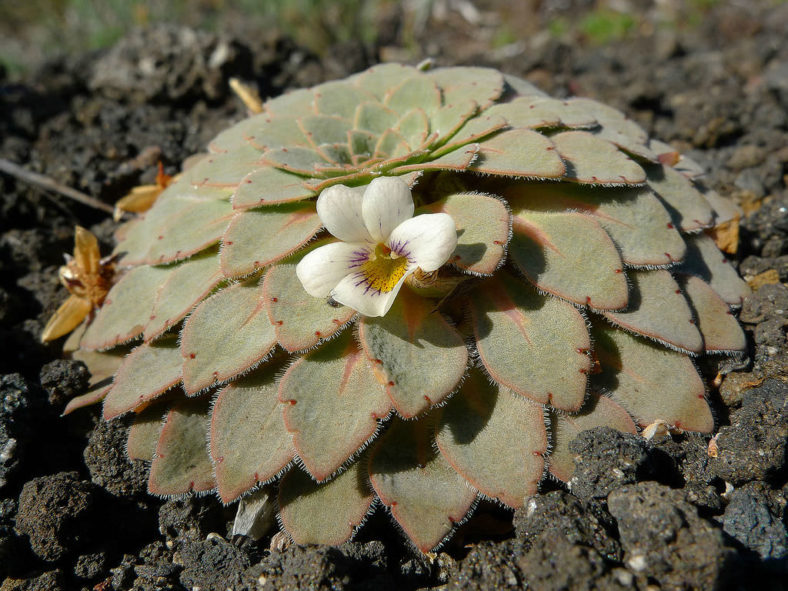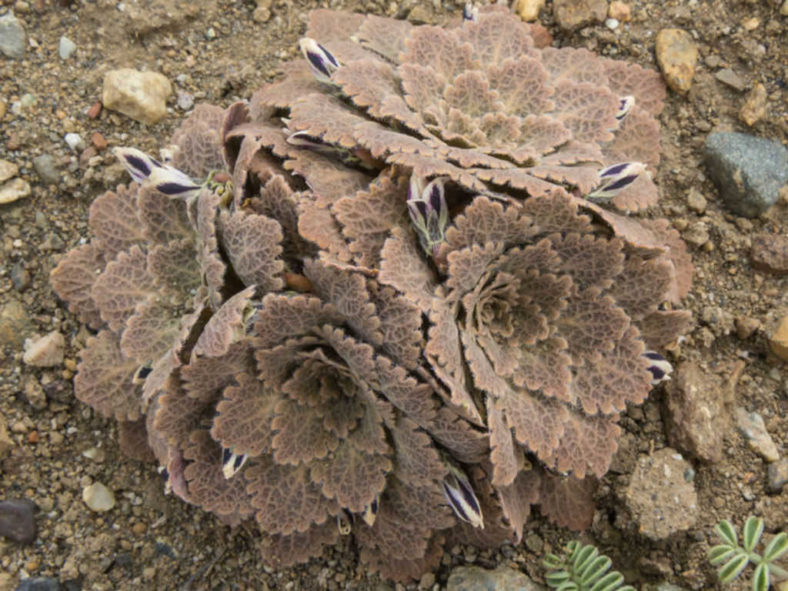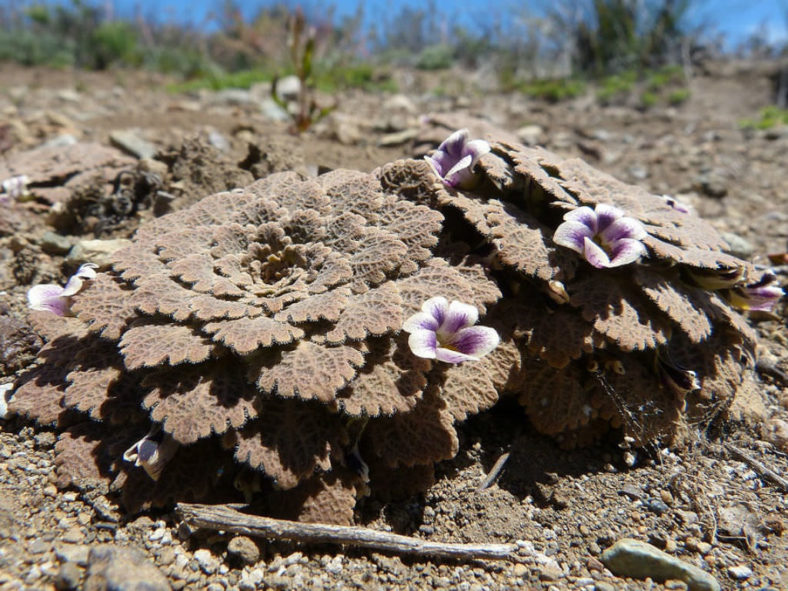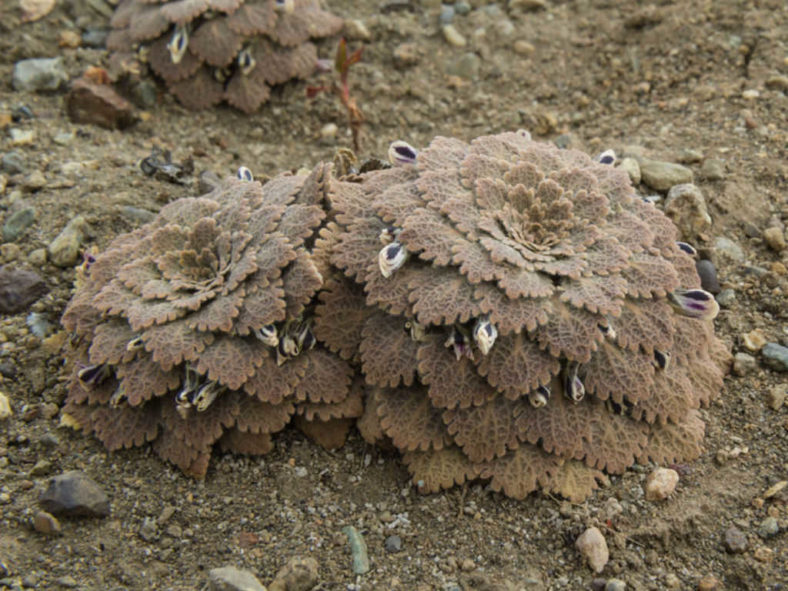Scientific Name
Viola volcanica Gillies ex Hook. & Arn.
Synonym(s)
Viola exilis, Viola volcanica var. volcanica, Viola vulcanica
Common Name(s)
Volcanic Violet
Scientific Classification
Family: Violaceae
Subfamily: Violoideae
Tribe: Violeae
Genus: Viola
Etymology
The specific epithet "volcanica (pronounced vol-KAN-ee-kuh)" means "volcanic" and refers to the volcanic soils where this species occurs.
Origin
Viola volcanica is native to Argentina and Chile.
Description
Viola volcanica is a small, stemless, annual or short-lived perennial that forms stunning, dome-shaped rosettes of beautifully textured leaves. The rosettes can grow up to 2 inches (5 cm) tall and 3.6 inches (9 cm) in diameter. The leaves are semi-succulent, in various shades of brown, and have hairy and scalloped margins.
The flowers have five white petals with violet veins and a yellow throat. They can reach about 0.6 inches (1.5 cm) in diameter and appear in late spring and early summer.

How to Grow and Care for Viola volcanica
As one of the Rosulate Violas, V. volcanica is known for being difficult to keep alive. Therefore, cold conditions, soil containing adequate nutrients, and as much light as possible are essential.
The main problem with Rosulate Violas is etiolation, caused by a lack of light, which results in the elongation of the compact rosettes. However, it is known that in any bunch of seedlings, some will quickly etiolate, while others may not. So, there is some scope in selecting those more likely to grow satisfactorily in cultivation.
Soil: This plant grows in relatively bare, loose soils, often volcanic in origin.
Hardiness: V. volcanica can withstand temperatures as low as 0 to 50 °F (-17.8 to 10 °C), USDA hardiness zones 7a to 11b.
Propagation: V. volcanica is grown only from seed and with some patience.
Learn more at How to Grow and Care for Rosulate Violas.
Toxicity of Viola volcanica
V. volcanica is nontoxic for humans and pets. Both the flowers and leaves are edible, fresh, cooked, or dried.
Links
- Back to genus Viola
- Succupedia: Browse succulents by Scientific Name, Common Name, Genus, Family, USDA Hardiness Zone, Origin, or cacti by Genus
Photo Gallery
Click on a photo to see a larger version.


